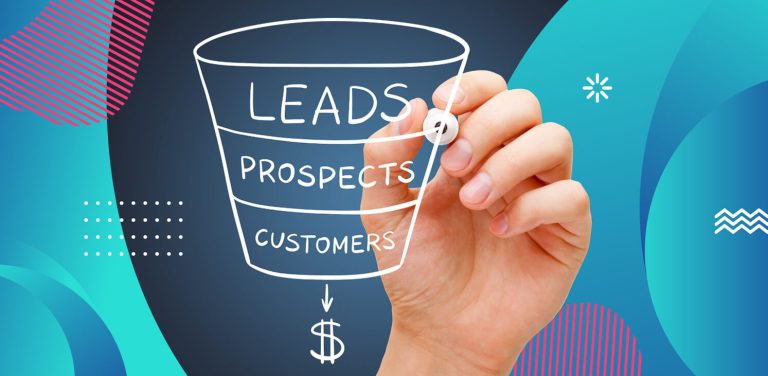In the dynamic realm of digital marketing, where competition is fierce and customer acquisition is paramount, the success of lead generation efforts stands as a crucial determinant of business growth. Effective lead generation not only fuels the sales funnel but also establishes the foundation for lasting customer relationships.
How to measure lead?
In the ever-evolving landscape of digital marketing, lead generation stands as a cornerstone for businesses aiming to expand their customer base and drive revenue. Lead generation is the process of attracting and converting potential customers into individuals interested in your products or services. Measuring leads effectively involves tracking and analyzing various metrics to assess the success of your lead generation efforts. KPI’s plays important role in it that are discussed as under:
1. Define Clear Objectives:
– Clearly articulate your lead generation objectives. Whether it’s increasing website sign-ups, driving webinar registrations, or obtaining trial subscriptions, having specific and measurable goals is crucial.
2. Use Analytics Tools:
– Implement robust analytics tools such as Google Analytics, HubSpot, or other marketing automation platforms. These tools help track user behavior, source of leads, and conversion paths on your website.
3. Track Conversion Rates:
– Monitor the conversion rates at various stages of the lead generation process. Track metrics like the conversion rate of website visitors to leads, form completion rates, and other relevant interactions.
4. Cost Per Lead (CPL):
– Calculate the cost per lead by dividing your total marketing spend by the number of leads generated. This metric provides insights into the efficiency of your marketing campaigns in acquiring new leads.
5. Lead Quality:
– Assess the quality of leads by considering factors like demographics, lead source, and behavior. Metrics such as bounce rates, time spent on site, and engagement levels help evaluate lead quality.
6. Lead-to-Customer Conversion Rate:
– Measure the percentage of leads that progress through the sales funnel and eventually convert into paying customers. This metric provides a direct correlation between lead generation efforts and revenue.
7. Lead Velocity Rate:
– Track how quickly your lead database is growing over time. A positive lead velocity rate indicates healthy growth in lead acquisition, suggesting that your marketing efforts are effective.
8. Customer Lifetime Value (CLV):
– Assess the CLV by calculating the average revenue generated by a customer over their entire relationship with your business. This helps determine the long-term value of leads and justifies acquisition costs.
9. Lead Attribution:
– Attribute leads to specific marketing channels or campaigns using UTM parameters or tracking codes. This enables you to identify which sources are driving the most valuable leads and optimize your marketing mix accordingly.
10. Sales Pipeline Metrics:
– Collaborate with the sales team to track metrics within the sales pipeline. Analyze lead progression, deal velocity, conversion rates at different sales stages, and other relevant metrics.
11. Social Media Engagement:
– Monitor engagement metrics on social media platforms, including likes, shares, comments, and click-through rates on shared content. Evaluate how effectively your social media efforts are translating into lead generation.
12. Email Marketing Metrics:
– Analyze email marketing performance through metrics such as open rates, click-through rates, conversion rates, and unsubscribe rates. Evaluate how email campaigns contribute to lead acquisition and nurturing.
13. A/B Testing:
– Conduct A/B testing on various elements of your lead generation campaigns. Test variations in landing pages, call-to-action buttons, email subject lines, or ad creatives to identify what resonates best with your audience.
14. Feedback and Surveys:
– Gather feedback directly from leads through surveys or other means. Understand their preferences, pain points, and satisfaction levels to continuously refine and improve your lead generation strategies.
15. Benchmark Against Industry Standards:
– Compare your lead generation metrics against industry benchmarks. Benchmarking helps you understand how well your performance aligns with industry standards, identify areas for improvement, and stay competitive.
B2B Lead Generation Strategies:
B2B (Business-to-Business) lead generation involves identifying and capturing potential business clients or customers. Here are key strategies to drive effective B2B lead generation:
-
Targeted Content Marketing:
– Develop high-quality and targeted content that addresses the specific needs and pain points of your B2B audience. Utilize blog posts, whitepapers, case studies, and webinars to showcase expertise and provide value.
-
Account-Based Marketing (ABM):
– Focus on specific target accounts and personalize marketing efforts to address the unique requirements of each account. Align marketing and sales teams to create a cohesive approach in targeting and nurturing key accounts.
-
Professional Networking:
– Leverage professional networking platforms like LinkedIn to connect with potential clients, industry leaders, and decision-makers. Participate in relevant groups and discussions to build relationships and establish credibility.
-
Email Marketing Campaigns:
– Develop targeted email campaigns with personalized content for different segments of your B2B audience. Use email automation tools to nurture leads through the sales funnel.
-
Webinars and Virtual Events:
– Host webinars and virtual events to showcase expertise, address industry challenges, and engage with potential clients. Collect registrations and follow up with attendees for further engagement.
-
Social Media Advertising:
– Utilize social media advertising platforms to target B2B audiences based on job roles, industries, and interests. Create compelling ad creatives and lead generation forms to capture relevant information.
-
Search Engine Optimization (SEO):
– Optimize your website and content for search engines to enhance visibility among businesses searching for solutions. Use relevant keywords and create content that aligns with B2B search queries.
-
Strategic Partnerships:
– Build partnerships with other businesses that complement your offerings. Collaborate on joint ventures, co-marketing campaigns, or referral programs to expand your reach.
-
Thought Leadership and Guest Blogging:
– Establish thought leadership in your industry by contributing guest posts to reputable B2B publications. Share insights, trends, and best practices to position your brand as an authority.
-
Content Syndication:
– Syndicate your high-performing content on B2B platforms and industry publications. Reach a wider audience and generate leads by exposing your content to relevant readers.
-
Interactive Content:
– Develop interactive content such as quizzes, assessments, or calculators to engage B2B prospects. Collect valuable data during interactions to tailor follow-up communication.
-
Retargeting Campaigns:
– Implement retargeting campaigns to re-engage B2B website visitors who didn’t convert initially. Show targeted ads to remind them of your offerings and encourage them to take further action.
-
Customer Referral Programs:
– Encourage satisfied B2B clients to refer your services to their network. Implement referral programs with incentives to motivate clients to share recommendations.
-
In-Depth Product Demos:
– Offer in-depth product demonstrations tailored to the specific needs of potential B2B clients. Showcase the value proposition and address specific pain points during the demo.
-
Data-Driven Analytics:
– Utilize data analytics to measure the performance of your B2B lead generation efforts. Monitor key metrics, analyze trends, and continuously refine strategies based on insights.
Conclusion:
In conclusion, effective lead generation strategies are essential for businesses seeking growth and success. Whether in B2B or B2C contexts, the key is to adopt a diverse and well-coordinated approach. Leveraging content marketing, targeted advertising, and personalization helps businesses reach their audience at various touchpoints, fostering engagement and trust.
The success of lead generation efforts hinges on continuous optimization. Regularly analyzing performance metrics, adapting strategies based on insights, and staying abreast of industry trends contribute to sustained success. Ultimately, a holistic and customer-centric approach, coupled with agility and innovation, is the cornerstone of a successful lead generation strategy.


